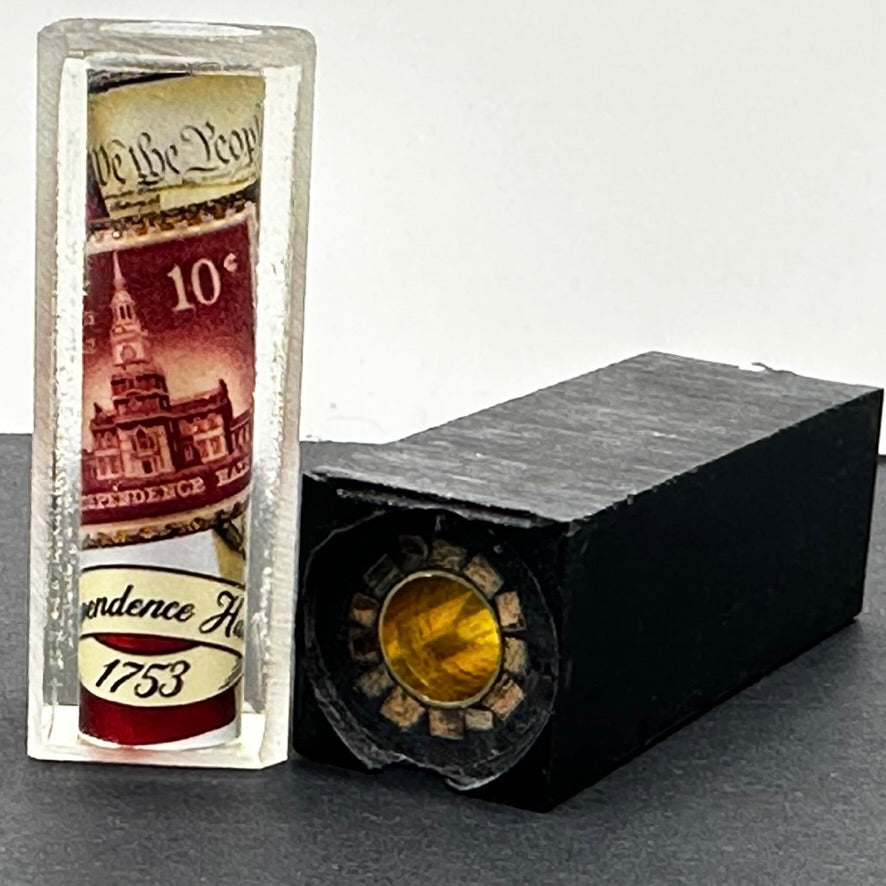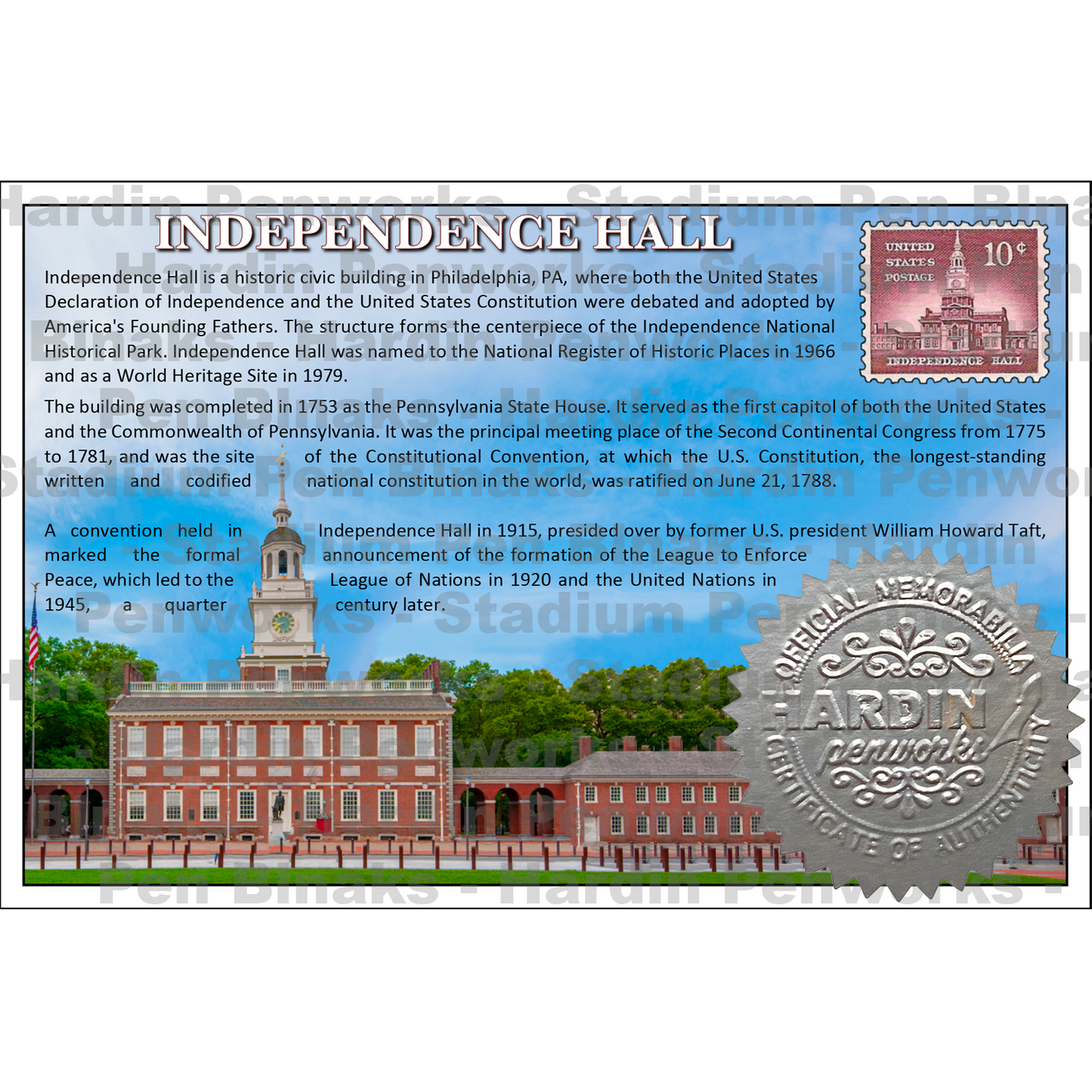Independence Hall Jr Set
Independence Hall Jr Set
Prodcut Base price with no add-on options
Low stock: 2 left
Product Price with any add-on options selected
Couldn't load pickup availability
Independence Hall wood with vintage 10¢ US Mail Stamp from 1956
All blanks will come with one COA per blank. COAs are 4" x 6" card stock with silver foil embossed COA seal.
Blank Tube Size Descriptions:
- JR Sets include a stamp and custom label JR Cap 12.5mm tube featuring a vintage Independence Hall Stamp and pre-tubed Jr Lower 10.5mm "barreled" wood recovered from an Independence Hall renovation.
Independence Hall is a historic civic building in Philadelphia, PA, where both the United States Declaration of Independence and the United States Constitution were debated and adopted by America's Founding Fathers. The structure forms the centerpiece of the Independence National Historical Park. Independence Hall was named to the National Register of Historic Places in 1966 and as a World Heritage Site in 1979.
The building was completed in 1753 as the Pennsylvania State House. It served as the first capitol of both the United States and the Commonwealth of Pennsylvania. It was the principal meeting place of the Second Continental Congress from 1775 to 1781, and was the site of the Constitutional Convention, at which the U.S. Constitution, the longest-standing written and codified national constitution in the world, was ratified on June 21, 1788.
A convention held in Independence Hall in 1915, presided over by former U.S. president William Howard Taft, marked the formal announcement of the formation of the League to Enforce Peace, which led to the League of Nations in 1920 and the United Nations in 1945, a quarter century later.
Completed in 1735 as the Pennsylvania State House, it took two years to build Independence Hall home of the 1st Continental Congress and the Declaration of Independence and where the Constitution was debated and put to paper.
During the renovation of Independence Hall in 1897-98, 16 of the original beams holding up the floor on which the giants of the era debated the future of the 13 Colonies were replaced under the supervision of the project manager and superintendent of the Independence Hall, Samuel Reeves. Rather than discarding the beams, Reeves retained possession of the old timbers.
Share





